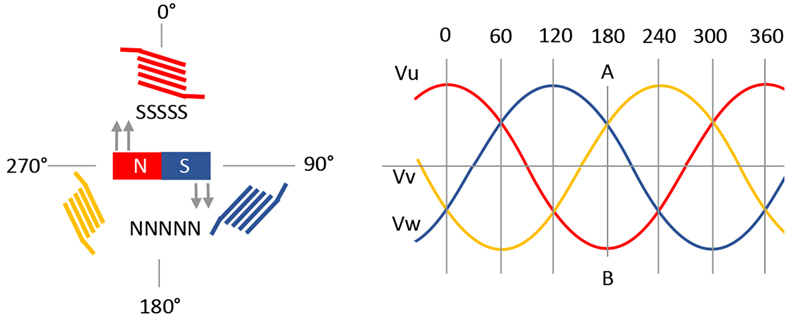Follow along with the video below to see how to install our site as a web app on your home screen.
Note: This feature may not be available in some browsers.
Only true for smaller or low cost systems.A BLDC motor only has two windings energized at any one time.

In a 3-phase power system, be it Wye or Delta, there is no such thing as ""getting the polarity backwards on one of the windings". In order to change phase rotation, you always swap any 2 of the leads. This applies to all std 3-phase equipment, be it motor, xfmr, or whatever. In the case of a motor (3-phase induction motor), swapping any 2 line leads reverses shaft rotation. 3-ph reversing starters do just that via two integral contactors, one wired A-B-C, the other wired C-B-A.In a wye connected system, it states in my book that if you get the polarity backwards on one of the windings then you reverse the direction of phase rotation. Can someone please give explain.
Not properly, the same as with a motor in wye (star) connection and a reversed internal winding.Would reversing one wye phase winding reverse the phase rotation for a transformer?
Not in all the CNC servo's I have been connected with over the decades, if they operate with 3ph they cannot be classified as BLDC , but PM 3ph AC, such as used by Fanuc & Mitsubishi. I have converted some of these with proprietary commutation to BLDC.Only true for smaller or low cost systems.
High performance BDLC drive systems use field-oriented control, aka vector control, using continuous PWM sine wave drive to each phase, with the drive waveform tracking the rotor angle to maintain 90' between the stator and rotor fields.
It's a similar concept to changing from switching windings to microstepping with stepper motors.
